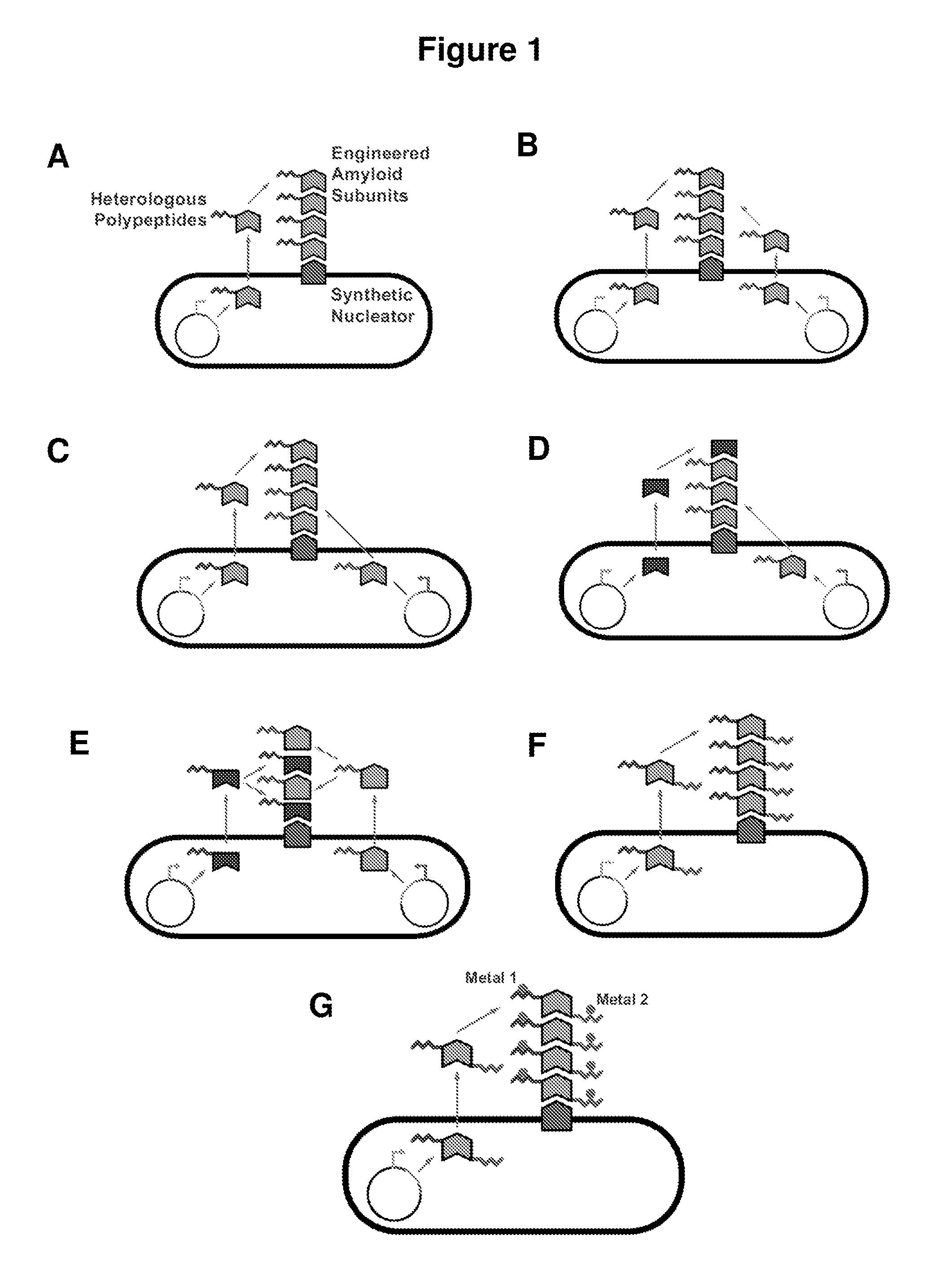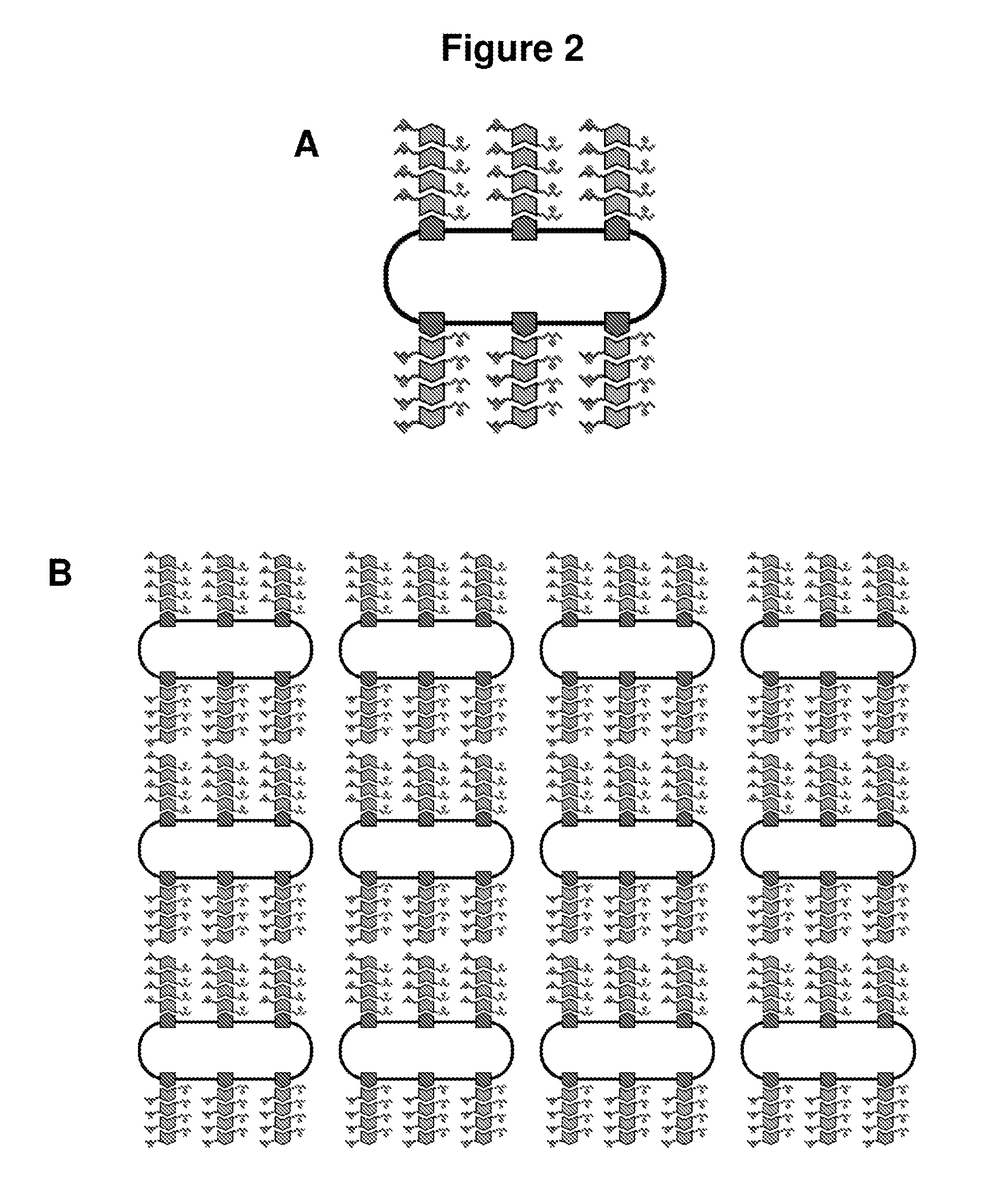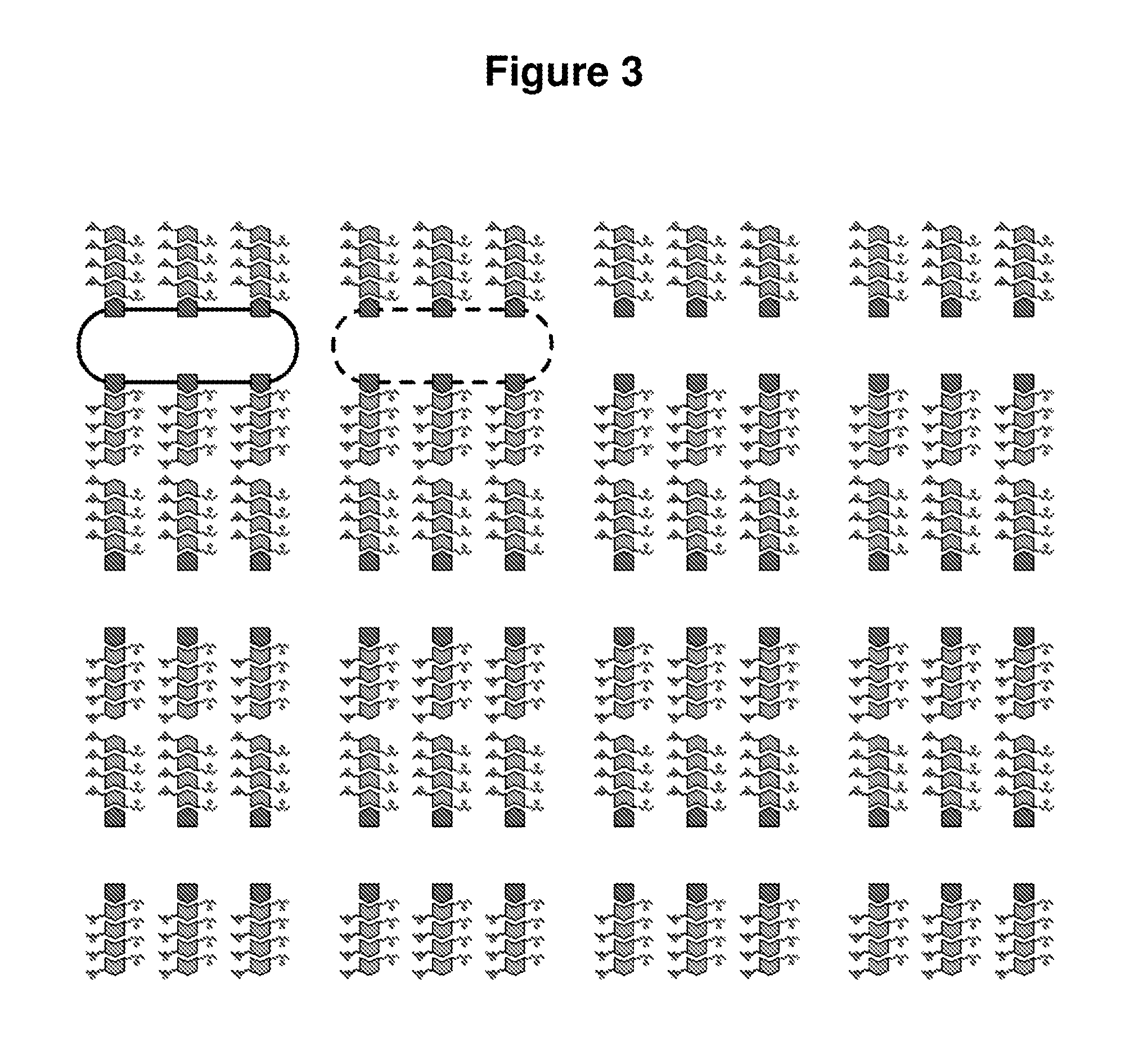Cell-directed synthesis of multifunctional nanopatterns and nanomaterials
a nanopattern and nanomaterial technology, applied in the field of engineering of biological nanostructures, can solve the problems of many challenging hurdles that still persist, and achieve the effect of great precision
- Summary
- Abstract
- Description
- Claims
- Application Information
AI Technical Summary
Benefits of technology
Problems solved by technology
Method used
Image
Examples
example 1
Exploring, Functionalizing, and Controlling Bacterial Nanowires
Introduction
[0162]Synthetic E. coli are engineered herein to act as bacterial micro-robots (BMRs) that synthesize and organize amyloid biomaterials. There are many extracellular amyloid or amyloid-like fibers in various types of bacteria, including Escherichia coli, Salmonella, Pseudomonas, Bacillus subtilis, Citrobacter, Shigella, and Enterobacter (Dueholm et al., (2010) Mol Microbiol 77:1009). Herein, curli fibers are engineered in E. coli. Curli fibers are surface-expressed functional amyloids that mediate biofilm formation and mammalian cell invasion by E. coli (Barnhart et al. (2006) Annu Rev Microbiol 60:131). Individual curli fibrils are ˜3-4 nm in diameter, can grow to many microns in length and can laterally associate to form larger bundles (Shewmaker et al., (2009) J Biol Chem 284:25065).
[0163]This broad synthetic-biology-based platform can direct the organized assembly of organic and inorganic materials and es...
example 2
Engineering of Multifunctional Bacterial Nanowires with Organic-Inorganic Interfaces
Construct Inorganic-Material-Binding Nanowires
[0197]A characteristic feature of bacterial nanowires described herein is their ability to interface organic and non-organic materials. Curli amyloid fibers are designed that display peptides which can bind and nucleate inorganic nanomaterials, such as gold, quantum dots, and iron oxide. These peptides are inserted into surface-exposed regions identified as described above. Using the mapping data, the density and spacing between successive material-binding peptides can be controlled (FIG. 13). For example, the distance between β-strands within β-sheets in curli amyloids is ˜4.7 Å while the distance between layers of β-sheets in curli amyloids is ˜9 Å (Shewmaker et al., (2009) J Biol Chem 284:25065). Thus, if peptides are displayed at multiple locations along the curli amyloid structure, it should be possible to achieve inter-peptide distances on the order...
example 3
Programming Synthetic Gene Circuits for Nanoscale, Microscale, and Macroscale Patterning
Characterization of the Assembly Rates of Bacterial Nanowires
[0214]In order to achieve detailed nanoscale patterning, the assembly rate for curli fibers is characterized. CsgA is expressed under inducible synthetic promoters such as pLtetO and pLlacO (Lutz et al., (1997) Nucleic Acids Res 25:1203). These plasmids are induced for CsgA expression and assayed using quantitative Congo Red binding at 480 nm and electron microscopy for curli fiber formation over several days or more. The change in dimensions for curli amyloids is characterized over time with a range of inducer concentrations. It is expected that a continuous increase in quantitative CR binding and fiber elongation via TEM will be measured over several days. It is also expected that fiber assembly rates will exhibit a dependence on inducer concentrations.
Control of Anisotropic Patterning of Bacterial Nanowires at the Nanoscale
[0215]Nano...
PUM
| Property | Measurement | Unit |
|---|---|---|
| diameter | aaaaa | aaaaa |
| wavelength | aaaaa | aaaaa |
| wavelength | aaaaa | aaaaa |
Abstract
Description
Claims
Application Information
 Login to View More
Login to View More - R&D
- Intellectual Property
- Life Sciences
- Materials
- Tech Scout
- Unparalleled Data Quality
- Higher Quality Content
- 60% Fewer Hallucinations
Browse by: Latest US Patents, China's latest patents, Technical Efficacy Thesaurus, Application Domain, Technology Topic, Popular Technical Reports.
© 2025 PatSnap. All rights reserved.Legal|Privacy policy|Modern Slavery Act Transparency Statement|Sitemap|About US| Contact US: help@patsnap.com



